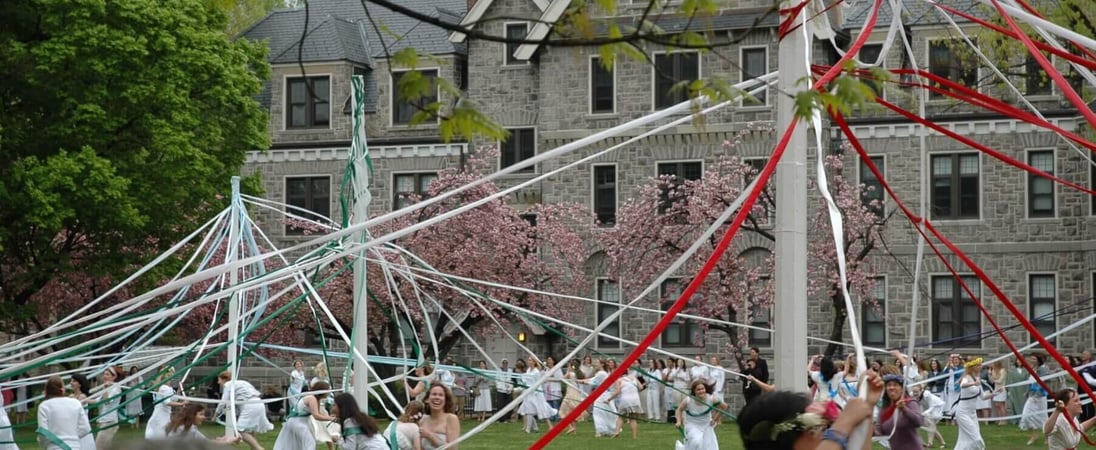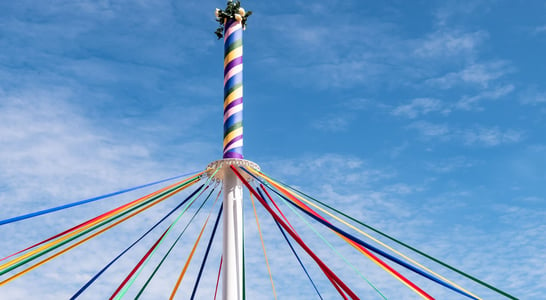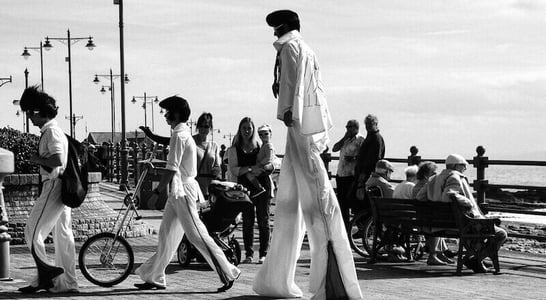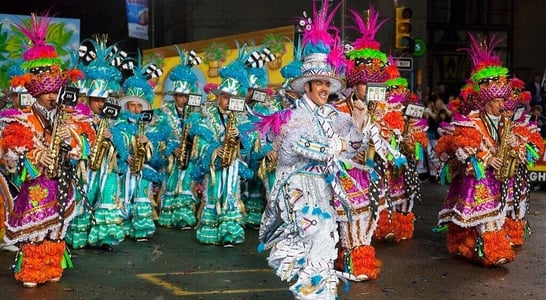
Calan Mai
Calan Mai is a vibrant and meaningful festival that heralds the start of summer in Wales.
This day is rich in history, tradition, and a strong connection to nature, making it a special occasion for many. On this day, Welsh communities come alive with various customs that have been popular through generations.
How to Celebrate Calan Mai
Here are some creative ways to embrace and celebrate Calan Mai:
Host a Bonfire Gathering: Invite friends and family over for an outdoor bonfire. Share stories, enjoy the warmth, and maybe roast some marshmallows. This nods to the ancient tradition of lighting fires to protect against spirits.
Decorate with Nature: Bring the outdoors in by decorating your home with flowers and greenery. This simple act honors the rebirth and fertility that Calan Mai symbolizes.
Attend a Local Festival: Look for a Calan Mai or May Day festival in your area. These events often feature traditional music, dancing, and other cultural activities.
Try Welsh Recipes: Cook up some traditional Welsh dishes to share with loved ones. Foods like Welsh cakes or bara brith can add a tasty cultural twist to the celebration.
Sing and Dance: Organize a small gathering to sing traditional carols or dance around a maypole. If you love music, learn a few Welsh songs to perform.
Plant Something New: In the spirit of new growth and fertility, plant flowers or a tree in your garden. It’s a beautiful way to connect with nature and the essence of Calan Mai.
Why Celebrate Calan Mai?
The celebration of Calan Mai is deeply rooted in ancient Celtic traditions, dating back to times when people were closely tied to the cycles of nature.
It’s a time of joy, marking the end of winter’s chill and welcoming the warmth and abundance of summer. Various activities, such as lighting bonfires, dancing around maypoles, and singing carols, are central to the festivities, symbolizing the light, growth, and fertility that summer brings.
One of the most enchanting aspects of Calan Mai is its rich tapestry of traditions. For example, lighting bonfires was believed to ward off evil spirits and ensure a prosperous summer. Homes and public spaces are decorated with flowers and greenery, reflecting the bloom of life.
Moreover, Calan Mai serves as a communal anchor, bringing people together to share in the joy and hope that the season promises. It’s a time to feast, sing, and partake in games, creating memories that strengthen community bonds.
The reasons behind celebrating Calan Mai are as varied as they are fascinating. They range from invoking good luck and health to acknowledging humans’ deep spiritual and physical connections with the earth. This festival is a testament to the enduring power of seasonal rituals in enriching our lives and linking us to our past.
Exploring its history and current practices can offer a wonderful glimpse into Welsh culture and the universal human connection to the rhythms of the natural world, allowing one to dive deeper into the traditions and significance of Calan Mai.
History of Calan Mai
Calan Mai has a rich tapestry woven from ancient Celtic threads to mark the start of summer.
This festival is not just a date on the calendar; it’s a bridge to the past, connecting us to our ancestors’ reverence for nature and the changing seasons. People celebrated the earth’s rebirth and their hopes for a fruitful year through fires, songs, and dances.
Dating back as far as 900 AD, this event blurred the lines between our world and the spiritual realm. Folks believed magic was afoot on Calan Mai, and the veil between worlds thinned.
They lit bonfires, not just for warmth or light, but to protect against spirits they thought roamed freely on this night. These fires, symbols of life and energy, were central to the festivities.
As part of the celebration, communities would unite, adorning their homes and streets with fresh greenery and blooms.
This act of decoration was more than just making places look nice. It was a way to honor the new life springing up around them. Singing and dancing were also crucial, with traditional carols and maypole dancing providing a soundtrack and spectacle for the celebration.
The customs of Calan Mai are rich in symbolism. For instance, leaping over bonfires and dancing around maypoles weren’t just fun. They were rituals intended to bring good luck, fertility, and protection to the community and its crops. Such traditions were the ancestors’ way of influencing the world, ensuring that the coming months would be bountiful.
Today, Calan Mai continues to be a vital part of Welsh culture. It preserves these ancient customs while allowing for new interpretations and celebrations.
It’s a day that reflects on the past and looks forward to the future. As we gather to celebrate, we remember the enduring human connection to the cycles of nature and how we honor that bond.
Also on ...
View all holidaysWorld Password Day
Protect your privacy and self by taking some time to update your passwords. Avoid pet or family names, important dates, and other identifying information.
National Purebred Dog Day
Many purebred dogs offer invaluable services to mankind, from sheepherding to hunting to guarding and search-and-rescue, so give some love to purebreds.
School Principals’ Day
Organize an event or write a card to show your appreciation for the educators that run our schools. School principals work hard to make kids’ lives and educations better.
We think you may also like...
May Day
With flowers blooming and the sun shining, it's the perfect time to dance around the maypole and celebrate springtime!








